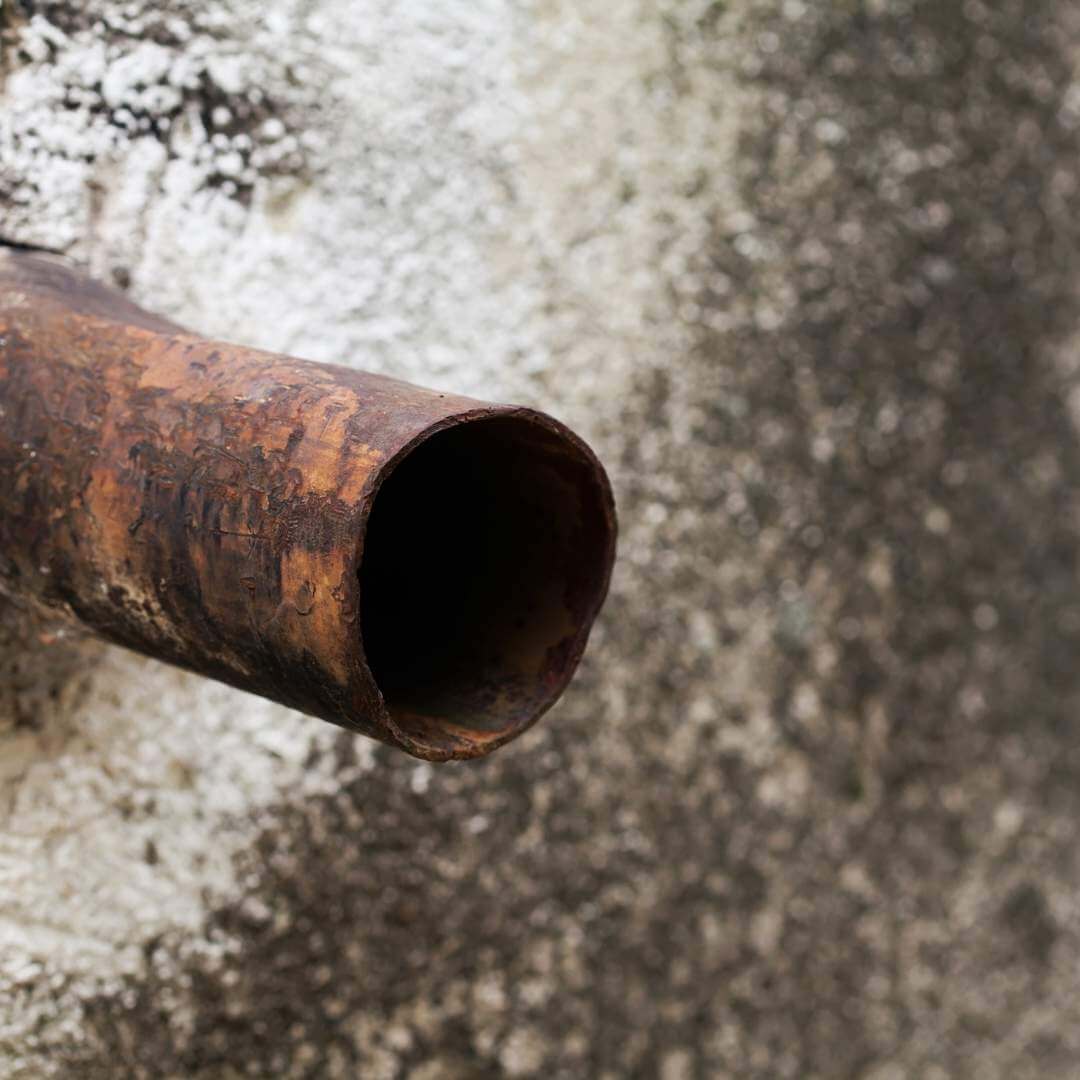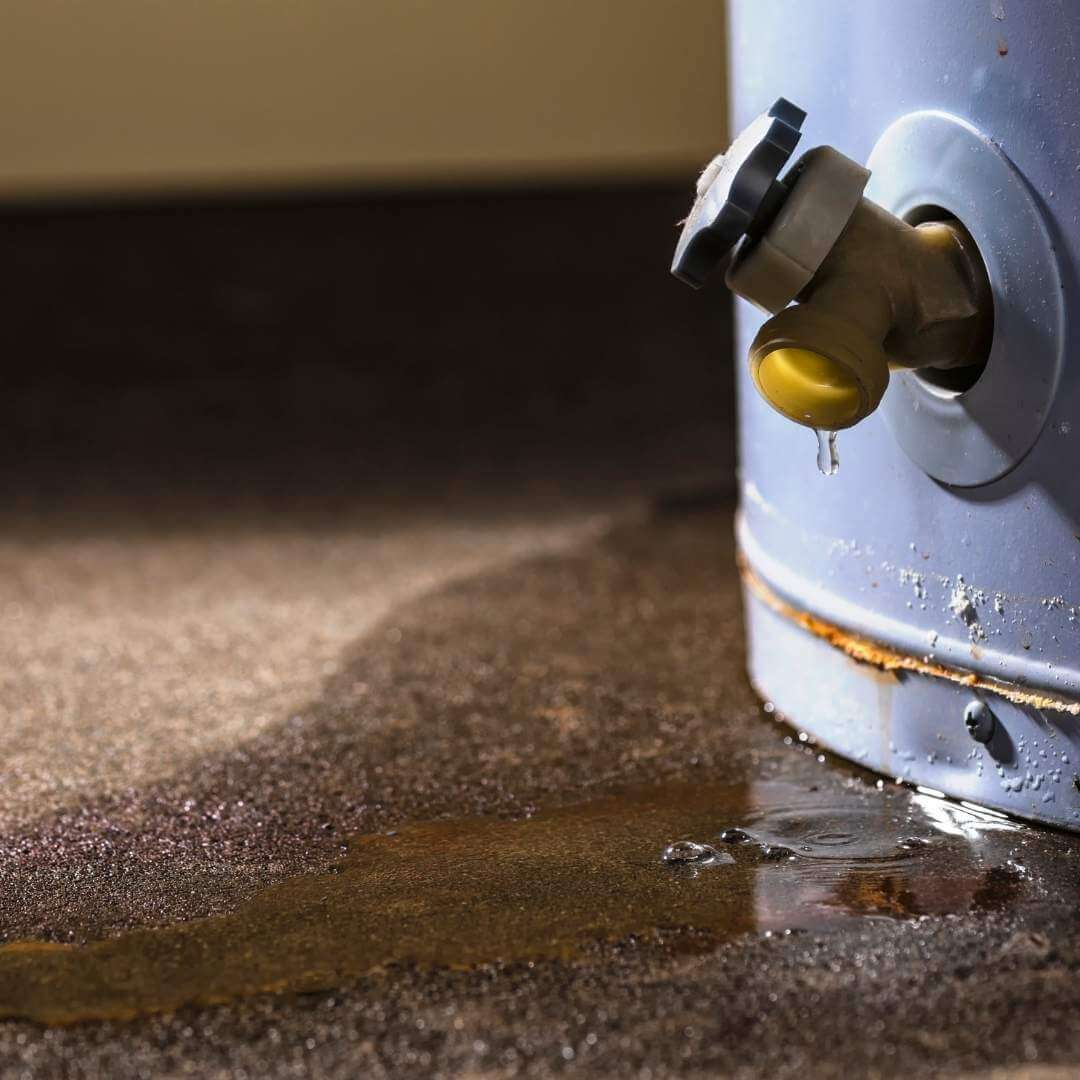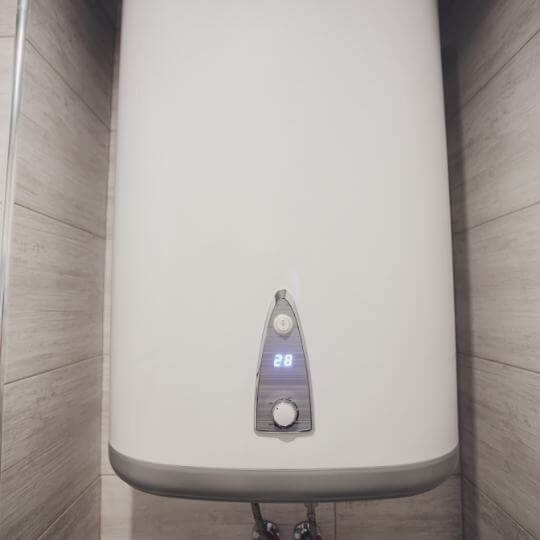After frequent use, it’s only normal for things around your house to break. Unfortunately, this also applies to such equipment as water supply fixtures, like water tanks, boilers, and toilets. So what happens when one or more of these develops a fault and starts to overflow? Is a leaking overflow pipe dangerous?
Leaking overflow pipes are a sign that they are functioning as intended. However, there is always a cause for the leak. This article will help you understand how to find the root of the problem and what you can do to fix it.
Keep reading this post if you:
- Are having problems with a leaky overflow pipe;
- Want to locate the leak’s source and correct it;
- Are attempting to determine what’s causing the leak.
What is an overflow pipe?

It’s crucial to understand what an overflow pipe is before delving further into the problem. It is a pipe attached to a water tank or cistern in your house and usually exits to the exterior [1].
Its function is to divert any excess water from the tank to run outdoors rather than within your house, protecting your home from harm.
An overflow pipe is connected to the following things:
- The cold water tank, combi boiler, and central heating water tank. These overflow pipes go outside of your house.
- A copper cylinder. An expansion/vent pipe is another type of overflow pipe on a copper cylinder (or hot water cylinder). It flows from the cylinder into the tank that holds the cold water feed and expansion.
- Basins, sinks, and bathtubs. Any sink or bathtub with an overflow pipe directs the water down the drain rather than onto the ground.
Is a Leaking Overflow Pipe Dangerous?

A leaky overflow pipe poses a risk because it can signal that your water tank needs repair. Water should not constantly seep from water tanks. The first danger is being scalded by water from the heater.
Hot water can cause serious burns, even at the recommended level of 120oF [2]. An overflow pipe leak may also flood your home with water if not addressed in time.
The accumulation of gas inside the water heater may be caused by unreasonably high temperatures. The extra gas won’t be able to escape if the temperature and pressure relief valve is blocked (usually with sediment). The tension increases until the tank effectively turns into a bomb.
Overflow pipe leaking intermittently
Even though the leak may be intermittent, the overflow pipe spilling outdoors is a worrying scenario for your plumbing systems. If a leak is left unattended for a long time, it may cause an unneeded water overflow and mold, forcing you to shut off the entire plumbing system.
Therefore, addressing any problems as soon as they arise is vital. In addition, many issues may be easily resolved if you know where the leak is.
Overflow pipe gushing water
Each heater features a pressure and temperature relief valve. As implied by the name, it serves the purpose of relieving the heater’s pressure and temperature.
Most heaters have their temperature and pressure set to 120 or 140 pounds per square inch, respectively. When the water heater goes above, and beyond these limitations, the T&P valve opens [4].
When the valve opens, water must flow out of the overflow pipe. A gushing overflow pipe indicates that the temperature and pressure in your water heater are higher than desired. Therefore, it requires attention right away.
How to stop an overflow pipe from leaking

Knowing the function of an overflow pipe, let’s move on to what to do if you discover a leak.
Most of the time, a broken float valve is to blame for an overflow pipe leak. This element can be found in toilet cisterns, cold water, and central heating system tanks [5].
It consists of a plastic ball fastened to the end of a metal or plastic arm. The ball floats on top, directing the flow of water into the tank or cistern to keep it full and prevent overflowing simultaneously.
Water may not completely stop flowing into the tank if the float valve is broken. This causes a tank or cistern to overflow, which is why the overflow pipe is leaking.
What can you do, then, to resolve this problem?
- Determine the source of the leak
You must first identify the source of the leak. If the pipe is close to the ground, the toilet cistern is most likely the source of the leak. However, your cold water or central heating tanks are at fault if the leaky pipe is at loft level and emerges from the roof’s eaves.
Check each water tank’s and cistern’s water level to ensure you have found the leak. The overflow point is where the leak starts if the water level is too high or close to it compared to normal.
- Disconnect the water and drain it.
You must drain the water before taking action to resolve the issue. Use the isolation valve to stop water flowing to a toilet cistern. The water pipe that enters the cistern is where you can discover it. The screw should be rotated a quarter turn clockwise using a flat head screwdriver. By flushing the toilet, the water will be released.
Switch the stopcock to turn off the main water supply for water tanks. Next, run the bathroom faucets to empty the tank. Just enough must be drained to provide room for where you need to work. You are now ready. However, different solutions are available depending on where the leak comes from.
Overflow pipe for a cold water tank

The cold water feed and expansion tank, the sizable water tank in the loft, which serves your sinks, bath, and copper cylinder, may be the source of the leaky overflow line. The pipe, which exits through the roof’s eaves, is constructed of plastic, copper, or lead, with plastic being the more popular choice.
Your cold water tank overflow line may be leaking for one of two reasons:
- The water supply is continuous: The float valve is most likely to blame if the tank is constantly filled with water. First, ascertain whether it’s stuck. Next, check whether anything is preventing it from moving by lifting it. If that isn’t the case, see if the water-filled, perforated ball at the end is there. You’ll need to replace it in this situation. If you are still unable to identify the issue, the float valve washer is probably worn out and has to be replaced.
- Water is backing up the output pipes: If the float valve is not the problem, the outlet pipes are most likely the culprit. These pipes carry water from the tank to the hot water cylinder and taps in your home. The cause is a broken mixer tap attached to the main water supply.
Due to its higher pressure, the cold mains water may push the hot water back up the pipes, causing the tank to overflow. The easiest approach is to see if the overflow pipe only leaks when the mixer tap is turned on. If you discover this issue, you must seek professional assistance.
Overflow pipe for a heating tank
In your loft, the smaller tank is the feed and expansion tank for your central heating. Your heating system receives water from this tank. A plastic, copper, or lead overflow pipe that exits to the exterior through the eaves is also present.
Two factors can cause a central heating tank’s overflow hose to leak [7]:
- A continuous water feed: The float valve is to blame here, much like the cold water tank. The ball, washer, or entire valve may need to be replaced. Also, check to see if it’s stuck.
- A defective hot water cylinder: The other potential explanation, if the float valve is fully functional, is that there is a problem with the hot water (or copper) cylinder. We shall discuss the following two potential causes of this.
Copper cylinder overflow pipe
A copper (or hot water) cylinder’s overflow pipe enters the cold water tank instead of the exterior. This permits hot water in the cylinder to expand.
There are two potential reasons why the hot water cylinder overflow pipe can be leaking [8]:
- High-temperature setting on the thermostat: A trickle of water signals that the tank is overflowing because the water is excessively hot, even though it’s normal for the overflow line to drip when it is heating. Simply reduce the temperature on your thermostat to solve this problem.
- An imperfect copper cylinder coil: Inside of hot water cylinders is a coil that receives hot water from the boiler. The tank’s cold water fills the remainder of the cylinder. The hot water inside this coil will leak into the main cylinder if it is perforated, mingling with the cold water. Frequently, the central heating tank overflows when this happens. Unfortunately, changing the copper cylinder is the only way to fix this problem. It is preferable to leave this to a licensed plumber.
Boiler overflow pipe
This isn’t quite an overflow pipe, technically speaking. The pressure relief valve, however, is very similar and is found in combination (or combi) boilers [9]. This valve releases water to reduce the boiler’s pressure if it rises too high. The copper pipe exits the home through the exterior.
What causes your boiler overflow pipe to leak, then?
- The pressure release valve is not correctly seated.;
- The boiler is too old and has leaks not only from this valve but also from other elements;
- Excess pressure inside the boiler, probably caused by a malfunctioning expansion vessel.
We advise calling a Gas Safe registered boiler engineer to perform boiler repairs as they can be risky, putting your family’s and your home’s safety first.
Toilet overflow pipe
A toilet overflow pipe is easily found because it exits to the outside and is right behind your toilet. Like water tanks, the tube is composed of plastic, copper, or lead. If the water supply to the cistern isn’t stopping and your toilet overflow line is leaking, something is wrong [10]. The options available to you:
- Examine the float valve.
The float valve may be to blame in this situation. Simply said, it can be set too high. Bend the arm downward if it is metallic; if it is made of plastic, locate the adjustment nut at the top and rotate it. If that doesn’t work, perform the checks we outlined before to determine if it is defective and whether any parts (or the entire device) need to be replaced.
- Assess the water pressure supply.
It’s possible that the overflow pipe is leaking because the water is entering the cistern at excessively high pressure. Turn the isolation valve on the water supply pipe to reduce the pressure.
Sink or bathroom overflow pipe
Sink and bath overflow pipes don’t leak outside, unlike the other pipes we covered in this article. These might be recognizable as the tiny apertures beneath the rim towards the back of a basin [11]. Pipes leading directly into the drain are attached to these apertures. If you leave the water heater on and plugged in, they serve to empty the basin.
Remove the plug and allow the sink to drain to prevent it from overflowing. However, you likely have a blocked drain if it’s filling up with water even when the plug isn’t in.
Don’t attempt to fix a leaking overflow pipe by yourself.
If you don’t like doing your own home repairs or you have a complicated problem, you might want to consider hiring a professional. A licensed and experienced plumber will expertly resolve any issues. In addition, the Gas Safe qualified professionals can handle any boiler repair you may need to guarantee your family’s safety and protection of your property.

Michael Davis is a heating & plumbing expert who currently works as independent contractor in SC. He also writes for Plumbertip.
For almost 10 years he worked on various plumbing tasks across South Carolina.


